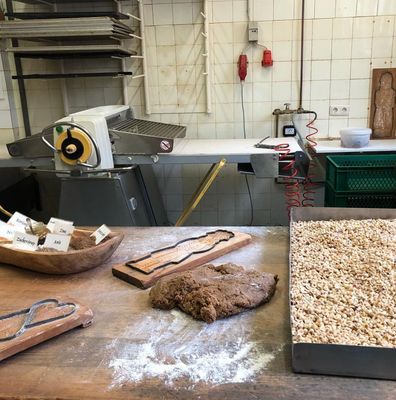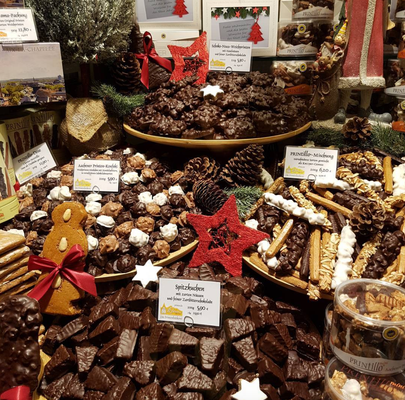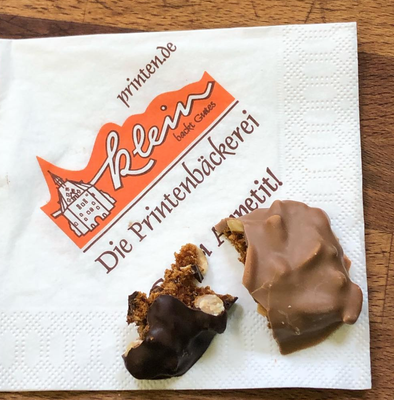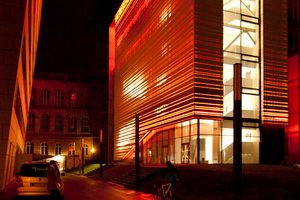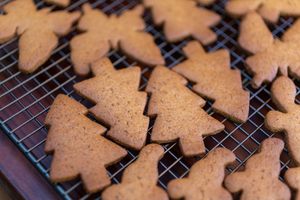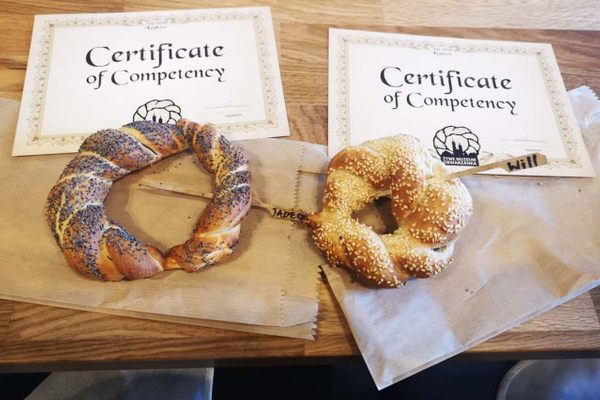About
The mythology around printen cookies swirls as thick as the burst of warm, aromatic air that hits you when you open a bakery door in winter. And no bakery is as spiced with history, and delicious cookie scent, as the Klein Printen Bakery. Located in central Aachen, the German city whose Protected Designation of Origin status makes it the only place where the cookie can be produced, the working bakery offers a cornucopia of the beet syrup–sweetened cookies, in spice, chocolate, and nut varieties. It also offers group tours through the baking process and the biscuit's history.
The museum dates the origin of the cookies to 15th-century Belgium, with the recipe eventually traveling to Aachen. A more creative origin story starts with fire—hellfire, to be precise. In the 17th century, the city of Aachen endured a horrible fire. In the aftermath, impoverished citizens searched for a source of revenue. Recalling the long-forgotten cookie recipe of the great Emperor Karl (or Charlemagne), they decided to revitalize the tradition to bring glory and revenue to the city. Because the emperor had taken his secret recipe to his grave, however, the forgotten concoction had to be recovered with the assistance of the devil himself, who helped a lowly baker's apprentice enter Karl's tomb to contact him. When the emperor's spirit heard of the city's plight, he gladly ceded his famous recipe, and the town began to crank out cookies. When the devil came around looking for payment, he couldn't resist gobbling down a whole baking sheet of printen—including the tray. Chastised by a stomachache, he slipped back to hell, with no souls but certainly indigestion.
Originally, the spiced cookies—similar in flavor and texture to American gingerbread, but crunchier—were sweetened with honey, for a mild, aromatic taste. In the early 1800s, however, Napoleon's trade blockade meant that Aachen was cut off from imported honey and cane sugar. Bakers turned to local beets as a substitute for sugar and syrup, and the signature modern printen flavor was born. Because of the cookie's hard texture, Aachen's home-bakers traditionally stored them in a closed box right after baking, or alongside cut apples and fresh bread, so the condensation would soften them up. While the classic recipe is crisp, there are now softer varieties as well.
Today, the family-owned Klein bakery continues a tradition inspired by Napoleon and the devil himself. Tourists can taste-test the bakery's rainbow of flavors, see antique cookie presses for stamping the cookies with decorative images, and grab a bag of the spiced or chocolate variety. Just don't ask for the secret recipe. Emperor Karl took it to the grave, and so will Klein's bakers—unless you call on the intercession of the devil himself.
Related Tags
Know Before You Go
Tours are available only by appointment for groups of 20 people or more. Family reunion, anyone?
Published
January 8, 2020


